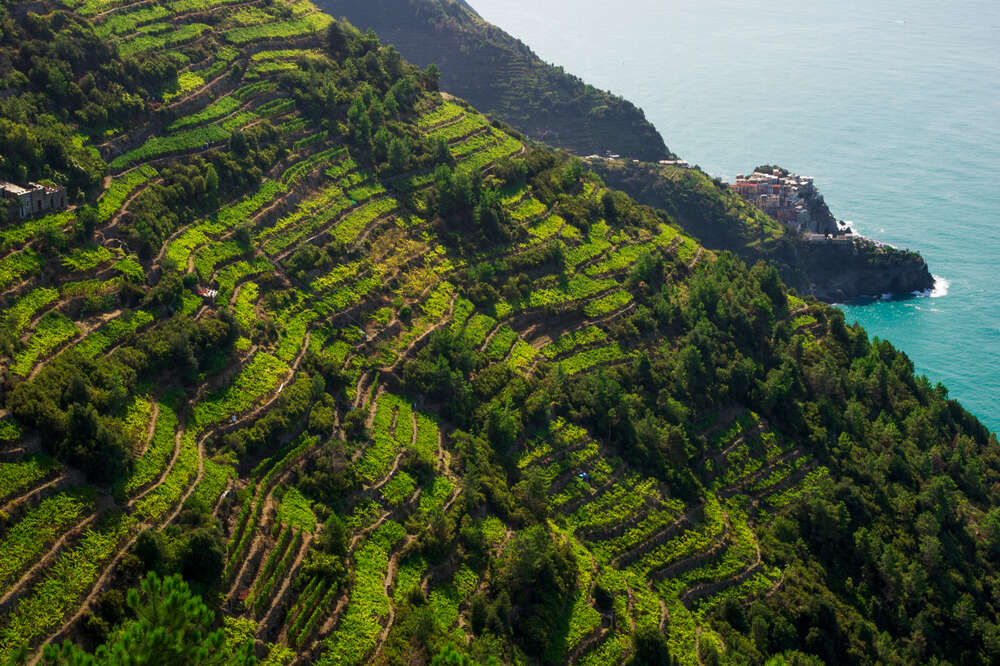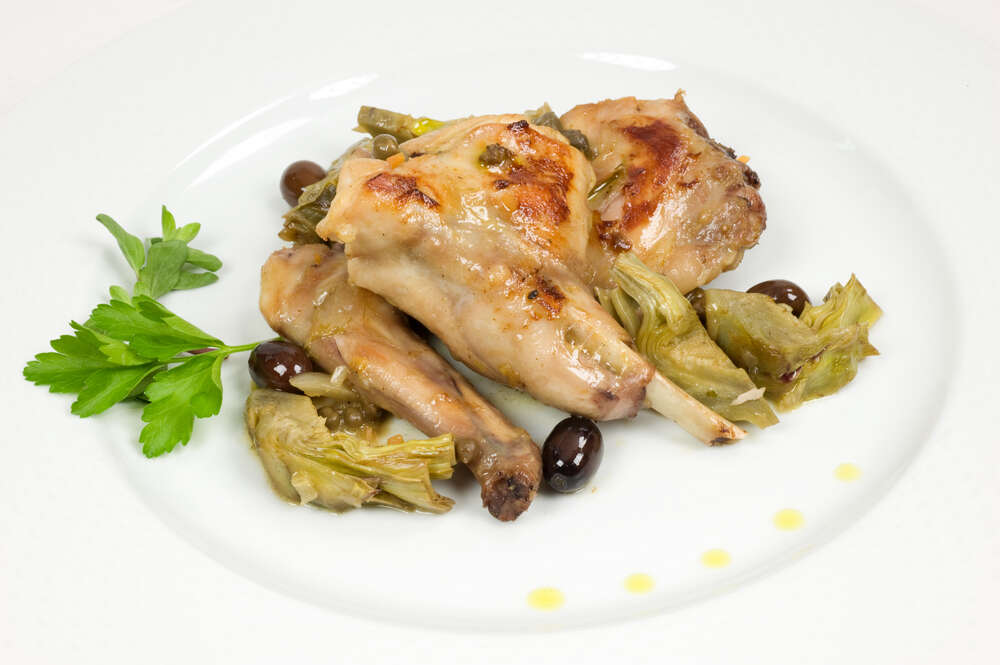
Joanna Simon explores the history, preparation, and wines to pair with Coniglio alla Ligure, a popular Italian rabbit dish that is near-ubiquitous in its home region of Liguria.
Nowadays you might find Liguria’s signature rabbit dish anywhere in Italy, with occasional regional adaptations such as Sicily’s typical agrodolce version with vinegar, sugar, and local Nocellara olives, but in its home region Coniglio alla Ligure isn’t so much anywhere as everywhere, or at least in every trattoria’s and every nonna’s repertoire—together, of course, with pesto and, on the coast, seafood.
Why rabbit? Think of the vineyards of this narrow, crescent-shaped coastal strip of north west Italy and it points towards the answer: vertiginous, rocky hillsides, often terraced and held up by dry-stone walls, frequently dropping straight down to the sea. Vines can thrive in such conditions, and poor soils are no barrier to olive trees either, but this is no kind of terrain for animal grazing or grain growing.
There are more hospitable parts of Liguria, especially to the west where, sheltered from the winds by the Maritime Alps, flowers and early vegetables are cultivated, but this densely populated, mountainous region was never going have much land to devote to livestock.
Rabbits are different: they can be reared in limited space and are famously reproductive. Rabbit farming became a feature of Liguria long ago, especially the western hinterland, and families reared their own. So this is a recipe of farmed rabbit, not the tougher flesh of the wild.
Coniglio alla Ligure: Simple and local
The ingredients are simple and local. In addition to the rabbit, there are Taggiasca olives (which I’ll come back to), pine nuts, extra virgin olive oil (quite a lot, although less in some modern recipes), dry wine (more of which in a moment), stock (broth), fresh bay leaves, thyme and rosemary, onion (usually) and sometimes garlic and/or celery.
The method is equally simple. The rabbit pieces, including, traditionally, heart and kidneys, are sautéd, as are onion, garlic, and celery if used; the wine and broth are then added together with the pine nuts, herbs, and olives and the dish is cooked over a low heat for about an hour.
The Taggiasca olive, known as Niçoise in France and Coquillo in Spain, is a small, firm-fleshed variety of varying colour, but often brownish purple. It’s been grown in Liguria for centuries, valued for the intensity of its aroma and taste as a table variety, as well as for the quality of the oil it produces.

As for the wine, most recipes use dry white, which in Liguria means Vermentino, or the local Pigato clone, but in the west, where the dish is said to originate, more red wine is produced, namely Rossese di Dolceacqua and Ormeasco de Pornassio (Rossese is the Tibouren of neighbouring Provence’s rosé wines and Ormeasco is a clone of Dolcetto).
Locally, the wine drunk with Coniglio alla Ligure is almost invariably the same as the one used in its preparation and I would do the same when there. Beyond Liguria’s borders, I don’t feel the need to toe the line, although I would happily drink Rossese di Dolceacqua if it was easier to find (one to look out for is Terre Bianche).
Although I cook this dish with white wine (Vermentino, out of respect more than anything else!), I usually drink red with it. Medium to light-bodied, fresher but not overly fruity styles, rather than powerful or tannic reds, can pick up the umami notes of the olives and fall in with the aromatic herbs without overpowering the rabbit.
From Liguria to the Loire
More than 25 years ago when I was researching Wine With Food, I concluded that the best reds for rabbit were Loire Cabernet Francs such as Saumur-Champigny and Chinon, Chiroubles, Aglianico del Vulture, Fronton, and, for those who wanted to go with Burgundy, Côte de Beaune rather than Nuits. Today, I would recommend the Hautes Côtes de Beaune, in particular (producers such as Domaine Boris Champy and Thibault Liger-Belair.
Red Loires have become riper and fleshier in the intervening years, but the Cabernet Francs still have the characteristic green sweetness and freshness that hits the spot with the rabbit and olives, especially Saumur-Champigny from the likes of Château du Hureau. Similarly, Beaujolais Crus have evolved—indeed quality has soared—and it’s all to the good with this dish, although I now favour Chénas or Juliénas (from Pascal Aufranc, for example—notable for value) or a Morgon (such as Domaine Mée Godard).
Aglianico del Vulture can be too robust for rabbit, but one such as Basilisco’s Teodosio has contemporary elegance and perfume allied to the savoury, volcanic minerality and freshness.
Wines that have come onto my radar for Coniglio alla Ligure more recently are Arbois Trousseau, especially Benedicte & Stephane Tissot’s Singular, young Chianti with finesse rather than richness, and modern Blaufränkisch with minimal oak influence.
Finally, a white: Le Soula Blanc from the Côtes Catalanes.






